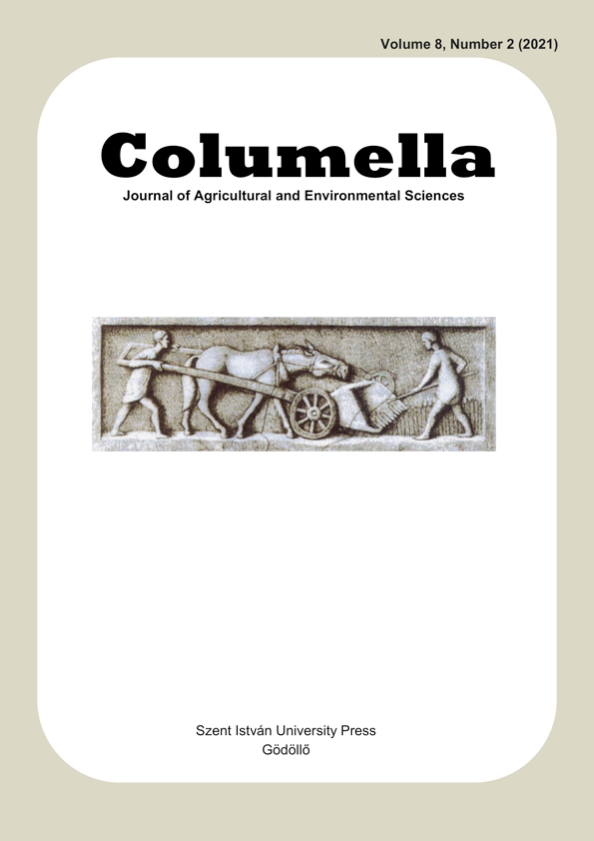Yield components of soybean cover crop regard to seed pre-treatment with bacteria and mycorrhiza
DOI:
https://doi.org/10.18380/SZIE.COLUM.2021.8.2.29Keywords:
Cover crop, soybean, bacteria, mycorrhizae, yield componentsAbstract
The aim of this study was to describe the importance of bacterization of soybean seeds and the use of preparations of mycorrhizal fungi in the sowing of soybeans on the family farm "Alduk" in 2020. Post- sowing of soybeans was done on 26th June 2020 as cover crop. Two very early varieties (00 maturity group): Korana (Agricultural Institute Osijek) and Merkur (NS seeds, Serbia) were used. Before sowing, the seeds were bacterized (Nitrobacterin – Faculty of Agrobiotechnical Sciences Osijek) or the addition of preparations of mycorrhizal fungi (VAM + Azotobacter chroococcum – Faculty of Agrobiotechnical Sciences Osijek). At harvest, yield components of soybeans in 2020 were determined. To determine the yield components from each treatment, 20 plants were selected and analysed separately. A total of 120 individual plants were analysed, and the following were determined: plant height (cm) and height to the first pod, number of fertile levels per plant from the central stem and per plant, number of pods per plant and seed mass of one plant (g), 1000 grain mass and at final, seed yield (t/ha). The height of the plants up to the first fertile pod was on average 7 cm, and varied from 5 cm (Mercury variety with VAM + AC treatment), to 9 cm (Korana on NB treatment). The number of fertile levels per plant averaged 11 on the main, central stem, while the total number of fertile levels per plant was 16. The number of pods per plant in this study averaged 42, with the seed weight of one plant being 10.48 g per plant. The highest mass of seeds per plant (g) had the Korana variety on the control treatment (14.95 g per plant). The Korana variety also had the lowest seed mass per plant (7.07 g per plant) with the application of Nitrobacterin. According to the results, Korana variety had the highest yield on the control treatment (1.19 t/ha), followed by the treatment with VAM + Azotobacter chroococcum (1.04 t/ha) and the lowest with the application of Nitrobacterin (0.84 t/ha). Merkur variety had the lowest soybean yield on the control treatment (0.69 t/ha), while with Nitrobacterin and VAM + Azotobacter chroococcum soybean yield increased by about 19% with Nitrobacterin and about 27% with VAM + Azotobacter chroococcum.
Downloads
Published
Issue
Section
License
Copyright (c) 2021 Ivana Varga, Helena Alduk, Suzana Kristek, Jurica Jović, Dario Iljkić, Manda Antunović

This work is licensed under a Creative Commons Attribution-NonCommercial-NoDerivatives 4.0 International License.










